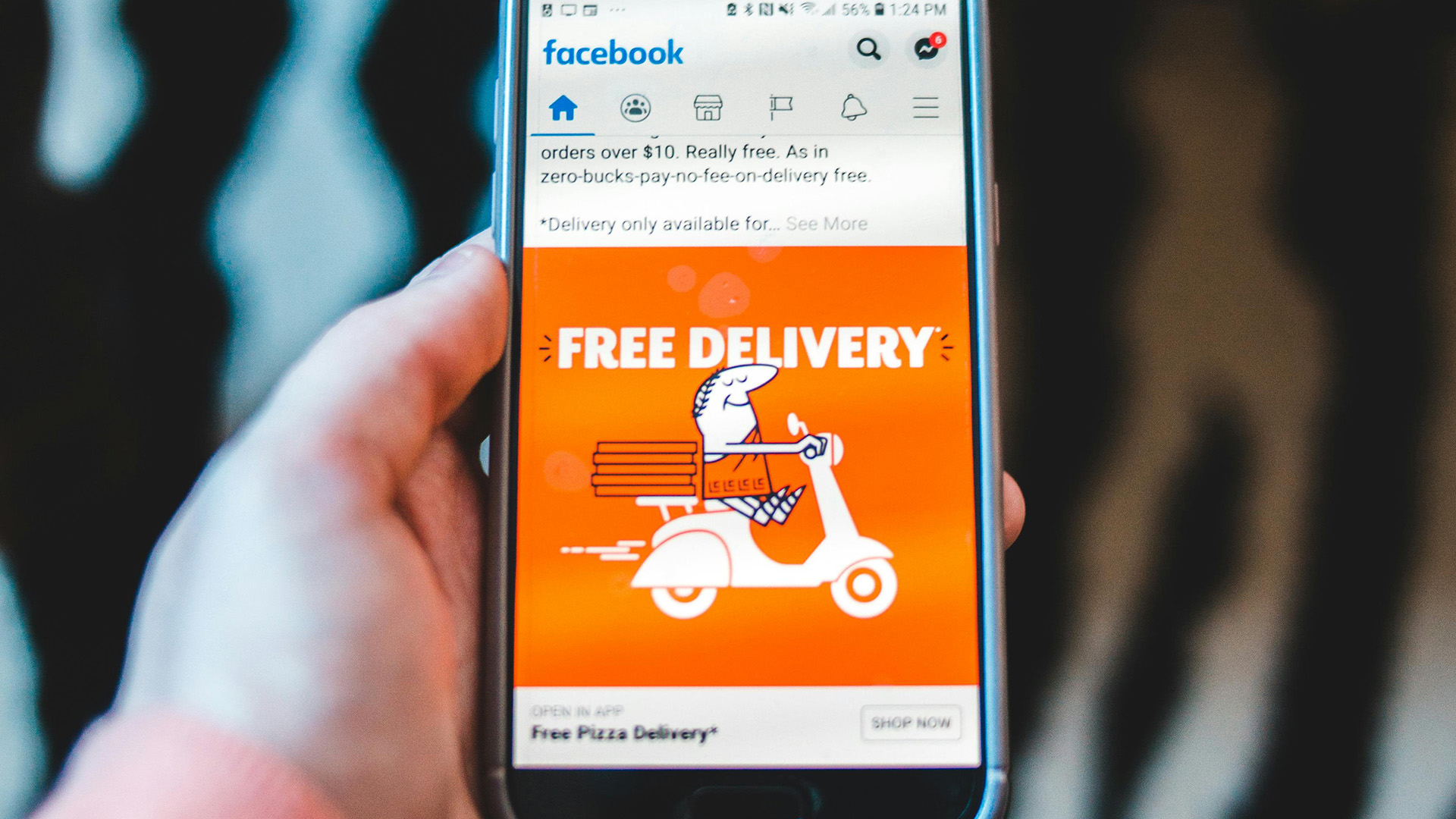Facebook advertising is a way for businesses to show ads to people on Facebook, Instagram, and other Meta platforms. It works by using data to target users based on their interests, location, behavior, and more. Advertisers choose a goal, like getting sales or website visits. They create ads with images, videos, or text and set a budget.
Facebook then shows the ads to people most likely to take action. Results are tracked in real-time so businesses can see what works and make changes. It’s a powerful tool for reaching the right audience and growing your business online.
How Does Facebook Advertising Work?

Facebook ads are a paid method of advertising your business on Facebook. You design ads that appear in users’ feeds, stories, or sidebars. Getting traffic and more visibility of your brand or sales with the help of ads.
Setting Up a Campaign
To start advertising through Facebook, businesses need a Facebook Page and access to Meta’s Ads Manager. This tool lets you create and manage your ad campaigns. When creating a campaign, you need to start by defining a marketing goal. This tells Facebook what your goal is, whether you want to build brand awareness, drive traffic to the website, get leads, or make sales.
From here, the platform will then optimize the delivery of your ads according to the specific goal that you selected. This is important because choosing the right objective dictates how Facebook will display and reach your ads.
Targeting the Right Audience
One of my favorite features of Facebook ads is the ability to target certain audiences. Based on what you like, who you follow, and what you watch, search for and buy, Facebook extracts a significant total of data about users.
Advertisers can leverage this data to market to people by their age, gender, location, interests, job title, online habits, and more. Help businesses build custom audience lists from existing contacts, like those who have visited their website or subscribed to their newsletter.
New users who have similar characteristics to an existing customer set can be identified using lookalike audiences. Targeting like this guarantees that ads are delivered to individuals who are more likely to care about what is being sold.
Creating the Ad Content
After determining your goal and audience, the next step is to create the ad itself. Facebook has various ad formats, including images, videos, carousels, and slideshows. Choose an ad type that matches your goal and message. The ad itself will contain creative elements, like an image, a copy, a headline, and a call to action.
Since most people check Facebook with their phones, it is crucial to ensure the content is attractive and simple to use for mobile users. With a clear product message in a well-designed ad, it is much easier for someone to do something about it.
Budgeting and Scheduling
Advertisers can choose a daily or total budget for their campaigns on Facebook. You also control the start and end times of your ads. Then, the platform will use your budget to connect with as many relevant people as possible in that time.
You can start small and adjust your budget as you start to see decisions that work for you. Facebook’s ad system is based on an auction model, meaning your ad is stacked up against the competition for real estate in users’ feeds. The price you pay is determined by your budget, the size of your target audience, and how captivating your ad is.
Facebook Pixel and Tracking Conversions
If you want to analyze the activity that users perform on your website after clicking on an ad, you will use the Facebook tool named the Facebook Pixel. This is one small piece of code that you can install on your website. It monitors user activities such as page views, product clicks, and orders placed.
So you can measure the performance of your ads, retarget visitors with additional ads, and build audiences based on specific behaviors. With the Pixel, advertisers can also optimize decisions for conversions, which means Facebook will find those most likely to take a desired action through your site.
Monitoring and Optimizing Performance
Once your ad is live, Facebook provides detailed data on how it’s performing through Ads Manager. You can track metrics such as impressions, clicks, conversions, and return on ad spend. This helps you understand what’s working and what isn’t.
Based on this data, you can make changes to improve your results, such as adjusting your budget, testing new images or messages, or refining your audience targeting. The key to success with Facebook advertising is continuous testing and optimization. Campaigns that are closely monitored and improved over time often perform much better and deliver a higher return on investment.
Tips for Creating Facebook Ads

Choose the Best Facebook Agency Ad Account
Choose the best Facebook agency ad account with proven results, expert campaign management, advanced optimization tools, and dedicated support to maximize your ad performance and scale efficiently while maintaining full transparency and control over your advertising strategy.
Know Your Audience Before You Begin
Before you create a Facebook ad, make sure you know who your target audience is. When you know who you’re communicating with, you can create messages that resonate. Consider your ideal customers’ age, gender, interests, and online behavior, as well as the problems they need to solve.
Facebook’s ad platform provides advanced audience targeting capabilities, which enhance the effectiveness of your ads. The more you know about your audience, the more relevant and attractive your ad content will be.
Choose the Right Campaign Objective
Choosing the right objective is the first step to creating a Facebook ad campaign. This tells Facebook what you want: more visits to your website, more engagement, lead generation, or conversions.
Choosing the right objective helps optimize your ads for people who are most likely to take that specific action. If you’re looking to create sales, for example, then a traffic or awareness objective is unlikely to give you the output you want.
A well-structured and aligned objective will improve the performance of ads, and it also shows Facebook how you want your content to be viewed by your target audience.
Write clear, compelling copy
The copy in your ad is as important as its visuals. Your copy needs to address the needs, challenges, or interests of your audience. It is advisable to keep your message simple, engaging, and easy to read all at once.
The opening line should arrest the reader’s attention, and the rest should create interest that builds to a natural call to action. Good ad copy should never be hard to understand or full of cliches. You focus on value: what the viewer gets from it and why it matters.
Use Eye-Catching Visuals

Images are what stop people from scrolling on a busy Facebook feed. Your ad image or video must be visible, relevant, and attractive. Avoid going for dull, poor visuals that do not match your brand and message.
Whether it’s a product, a story, or a testimonial, your visual should quickly tell people what your ad is at a glance. You should also design for mobile since the majority of Facebook users are on mobile devices. Mobile feeds perform better with vertical or square formats and result in a more immersive experience.
Include a Strong Call to Action
All successful Facebook ads contain instructions on what to do next. This is where your call to action, also known as the CTA, becomes crucial. “Shop Now,” “Learn More,” “Sign Up,” and “Get Offer”—the CTA should be clear and closely tied to the ad’s purpose.
The message is ubiquitous and motivates action, particularly when strong CTAs are present. It’s important that your button and message stand out, and that what you’re asking the user to do feels natural and rewarding.
Test Your Results And Learn From Them
Even a well-designed ad may not perform perfectly right away. That’s why testing is so important. Creating different versions of your ad with slight changes to the headline, image, or audience allows you to see what works best.
Facebook’s Ads Manager provides detailed analytics on how each version performs. Use this data to improve your ads over time. Ads that are continuously tested, refined, and optimized tend to achieve better results and a higher return on investment.
Keep Your Message Consistent with Your Brand
Your Facebook ad should reflect your overall brand voice and identity. From the colors and fonts to the tone of your writing, everything should feel familiar to your audience. Consistency helps build trust and recognition over time.
Even if you’re running a promotion or limited-time offer, your ad should still look and sound like it belongs to your brand. When people recognize your brand in their feed, they are more likely to stop, pay attention, and take action.
Final Words
Facebook advertising utilizes targeted audience reach, personalized content, budget control, and performance measurement to help businesses achieve their marketing objectives. As users look to either increase brand awareness, boost sales or generate leads, Facebook makes all of this possible in unity on one platform.
As always, the key is to have clear goals, understand your audience, craft great content, and learn from your successes and failures to improve future campaigns. However, when done correctly, Facebook advertising can lead to fantastic returns and be a critical part of your overall digital marketing strategy.
FAQs
Is It Worth Advertising On Facebook?
Yes, Facebook advertising is worth it for many businesses due to its precise targeting, broad reach, and cost-effectiveness, especially when optimized for specific goals like conversions or brand awareness.
Are Ads Free On Facebook?
No, Facebook ads are not free. You set a budget, and costs vary based on your targeting, competition, and ad quality. However, creating a Facebook page is free.
How Much Does It Cost To Advertise On Facebook?
The cost of Facebook ads depends on your targeting and competition. On average, businesses pay around $0.50 to $2.00 per click or $5 to $12 per 1,000 impressions. Costs can vary widely.

Founder Dinis Guarda
IntelligentHQ Your New Business Network.
IntelligentHQ is a Business network and an expert source for finance, capital markets and intelligence for thousands of global business professionals, startups, and companies.
We exist at the point of intersection between technology, social media, finance and innovation.
IntelligentHQ leverages innovation and scale of social digital technology, analytics, news, and distribution to create an unparalleled, full digital medium and social business networks spectrum.
IntelligentHQ is working hard, to become a trusted, and indispensable source of business news and analytics, within financial services and its associated supply chains and ecosystems










